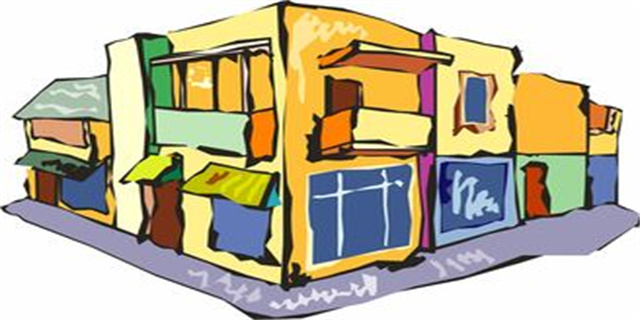首页 > 精选百科 正文
nacl的电子式(Understanding the Electronic Structure of Sodium Chloride)
冰糕就蒜 2024-03-25 08:32:20 精选百科489Understanding the Electronic Structure of Sodium Chloride
Sodium chloride, commonly known as salt, is an essential compound that plays a significant role in our daily lives. From enhancing the taste of our food to preserving it, salt has been used as a seasoning and a natural preservative for thousands of years. However, the properties and behavior of salt go beyond its culinary applications. In this article, we will explore the electronic structure of sodium chloride, its properties, and its significance in the world of chemistry and beyond.
The Structure of Sodium Chloride
Sodium chloride is a crystalline solid that forms a cubic lattice. Its molecular formula is NaCl, where Na represents the sodium cation and Cl represents the chloride anion. The molecule of NaCl is held together by an ionic bond, which is the result of the attraction between the positive and negative charges of the cation and anion, respectively.

The electronic structure of NaCl can be explained by the octet rule. According to this rule, atoms tend to gain, lose, or share electrons in order to attain a stable electron configuration with eight valence electrons in their outermost shell. In the case of NaCl, sodium atom loses one electron to achieve a stable configuration of 2,8, while the chlorine atom gains an electron to attain a stable configuration of 2,8,8. The transfer of the electron from the sodium to chlorine anion creates the NaCl molecule, which has a net charge of zero.
Properties of Sodium Chloride
The properties of sodium chloride are a result of its electronic structure. NaCl is a highly stable compound as a result of its ionic bond. It is also a highly soluble and highly conductive molecule, which can conduct electricity when dissolved in water. This property makes NaCl a valuable compound in a wide range of applications, including the production of chlorine and caustic soda. Sodium chloride is also hygroscopic, meaning that it can absorb water from the environment, making it an excellent desiccant and de-icing agent.

Moreover, NaCl has a high melting and boiling point, which is a result of its strong ionic bonds. When heated, sodium chloride undergoes a phase transition from a solid to a liquid, with the temperature of the transition depending on the amount of pressure applied. The melting point of NaCl is 801°C, while the boiling point is 1413°C.
The Significance of Sodium Chloride
The significance of NaCl goes beyond its properties and applications. The presence of sodium chloride in our bodies is crucial for maintaining the electrolyte balance and regulating blood pressure. Sodium and chloride ions are essential for the functioning of nerves and muscles, and they play a vital role in the absorption of nutrients and the elimination of waste products from the body. The lack of sodium chloride in the body can cause several health issues, including dehydration, muscle cramps, and even seizures.
Moreover, the abundance of NaCl in the natural environment and its importance in human health and industry make it a subject of research and exploration for scientists. The electronic structure of NaCl is the starting point for the study of other essential compounds and their behavior in the world of chemistry. Understanding the properties and structure of NaCl can lead to the development of new materials, technologies, and applications that can benefit humanity in various fields.
In conclusion, sodium chloride is an essential compound that plays a vital role in our daily lives, from seasoning our food to regulating our bodies' functions. Its electronic structure and properties make it a highly versatile and valuable molecule that finds applications in various fields, from industry to medicine and beyond. Understanding the structure of NaCl is the starting point for the study of other essential compounds and their behavior, leading to new discoveries and breakthroughs in science and technology.
猜你喜欢
- 2024-03-25 什么龙组词三个字(寻迹龙组的奇遇)
- 2024-03-25 abbeyroad(Discover the Magic of Abbey Road)
- 2024-03-25 nacl的电子式(Understanding the Electronic Structure of Sodium Chloride)
- 2024-03-25 jewelry(Title The Allure of Fine Jewelry)
- 2024-03-25 住商不动产和21世纪哪个好(住商不动产 VS 21世纪:房地产市场中的竞争之争)
- 2024-03-24 12万左右的车排行榜(Top10Carsin2021Performance,Reliability,andStyle)
- 2024-03-24 alacrity(Alacrity Embracing Efficiency and Promptness in Daily Life)
- 2024-03-24 include_once(Understanding the Difference between Require and Include_once)
- 2024-03-24 excel密码破解(Excel密码恢复工具助你破解忘记的密码)
- 2024-03-24 switchoff(Turning off the Power The Importance of Switching Off)
- 2024-03-24 建筑法规论文3000字(建筑规划法规 - 要与保障安全并重)
- 2024-03-24 computerscience(Exploring the World of Computer Science)
- 2024-03-25什么龙组词三个字(寻迹龙组的奇遇)
- 2024-03-25abbeyroad(Discover the Magic of Abbey Road)
- 2024-03-25nacl的电子式(Understanding the Electronic Structure of Sodium Chloride)
- 2024-03-25jewelry(Title The Allure of Fine Jewelry)
- 2024-03-25住商不动产和21世纪哪个好(住商不动产 VS 21世纪:房地产市场中的竞争之争)
- 2024-03-2412万左右的车排行榜(Top10Carsin2021Performance,Reliability,andStyle)
- 2024-03-24alacrity(Alacrity Embracing Efficiency and Promptness in Daily Life)
- 2024-03-24include_once(Understanding the Difference between Require and Include_once)
- 2023-02-24大盘鸡的家常做法(家常版大盘鸡,方法简单,好吃接地气,吃完汤汁拌面,真过瘾)
- 2023-02-24大连在哪个省(东北三省最发达的城市——大连)
- 2023-02-24大麦茶怎么泡(大麦茶怎么泡?)
- 2023-02-24河蚌怎么处理(为什么在农村很少人吃河蚌?)
- 2023-02-24牛肉丸子的做法(自制纯手工牛肉丸,劲道弹性足,鲜香有嚼劲)
- 2023-02-24浏览器兼容性(浏览器兼容模式怎么设置?)
- 2023-02-24zuoche(领导开车的礼仪)
- 2023-02-24获取ip地址(如何查看电脑ip地址?)
- 2024-03-25住商不动产和21世纪哪个好(住商不动产 VS 21世纪:房地产市场中的竞争之争)
- 2024-03-24alacrity(Alacrity Embracing Efficiency and Promptness in Daily Life)
- 2024-03-24excel密码破解(Excel密码恢复工具助你破解忘记的密码)
- 2024-03-24calufornia dreaming(梦幻卡尔弗尼亚)
- 2024-03-23包头市人事考试(包头市人事考试:深入拓展人才资源,推动城市发展)
- 2024-03-22adherence(Adherence A Key to Successful Treatment)
- 2024-03-22classical music(Exploring the World of Classical Music History, Characteristics, and Importance)
- 2024-03-22微生物学报和微生物学通报(微生物学进展)
- 猜你喜欢
-
- 什么龙组词三个字(寻迹龙组的奇遇)
- abbeyroad(Discover the Magic of Abbey Road)
- nacl的电子式(Understanding the Electronic Structure of Sodium Chloride)
- jewelry(Title The Allure of Fine Jewelry)
- 住商不动产和21世纪哪个好(住商不动产 VS 21世纪:房地产市场中的竞争之争)
- 12万左右的车排行榜(Top10Carsin2021Performance,Reliability,andStyle)
- alacrity(Alacrity Embracing Efficiency and Promptness in Daily Life)
- include_once(Understanding the Difference between Require and Include_once)
- excel密码破解(Excel密码恢复工具助你破解忘记的密码)
- switchoff(Turning off the Power The Importance of Switching Off)
- 建筑法规论文3000字(建筑规划法规 - 要与保障安全并重)
- computerscience(Exploring the World of Computer Science)
- 好听的行会名称(沉浸式体验营销:打造独特的品牌行会)
- mobilesubstrate(Mobile Substrate Empowering Mobile App Customization)
- javascript网页计算器(打造自己的Javascript网页计算器)
- heritrix(Heritrix A Powerful Tool for Web Archiving)
- feeling(Exploring the Depths of Emotion)
- applypay(Apple Pay The Future of Mobile Payments)
- polypropylene(Understanding Polypropylene A Versatile and Sustainable Material)
- 十宗罪恐怖旅馆剧情解析(十宗罪——探秘恐怖旅馆的诡异之旅)
- 天宫水西寺,云锦照东廓(The Beauty of Heavenly Palace, Shuixi Temple, and Yunjin in Chaozhou)
- calufornia dreaming(梦幻卡尔弗尼亚)
- pattern(ExploringtheArtofPatternDesign)
- mention(Exploring the Impact of Social Media on Mental Health)
- 难破mg5战力排行(MG5战力榜单难破,你该如何提升自己的实力?)
- officerecovery(Office Recovery Safeguarding Your Data and Restoring Productivity)
- 松鼠英文名字大全可爱男生(30 Adorable Male Squirrel Names You'll Love)
- blindfold(Exploring the World in Darkness The Challenge of Blindfold)
- 数见不鲜怎么读(数值不凡,数见不鲜)
- 000671阳光城股吧雪球(000671阳光城股吧分析:追踪雪球的投资策略)
